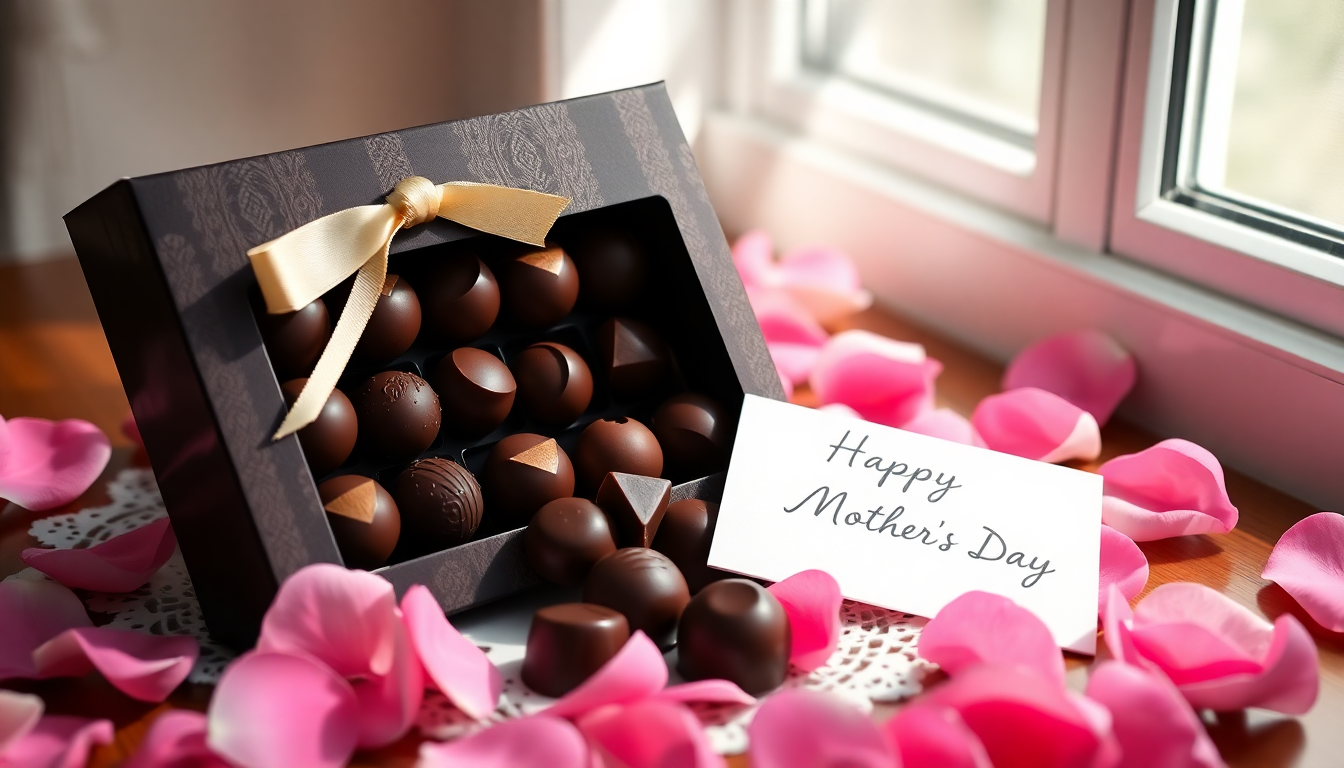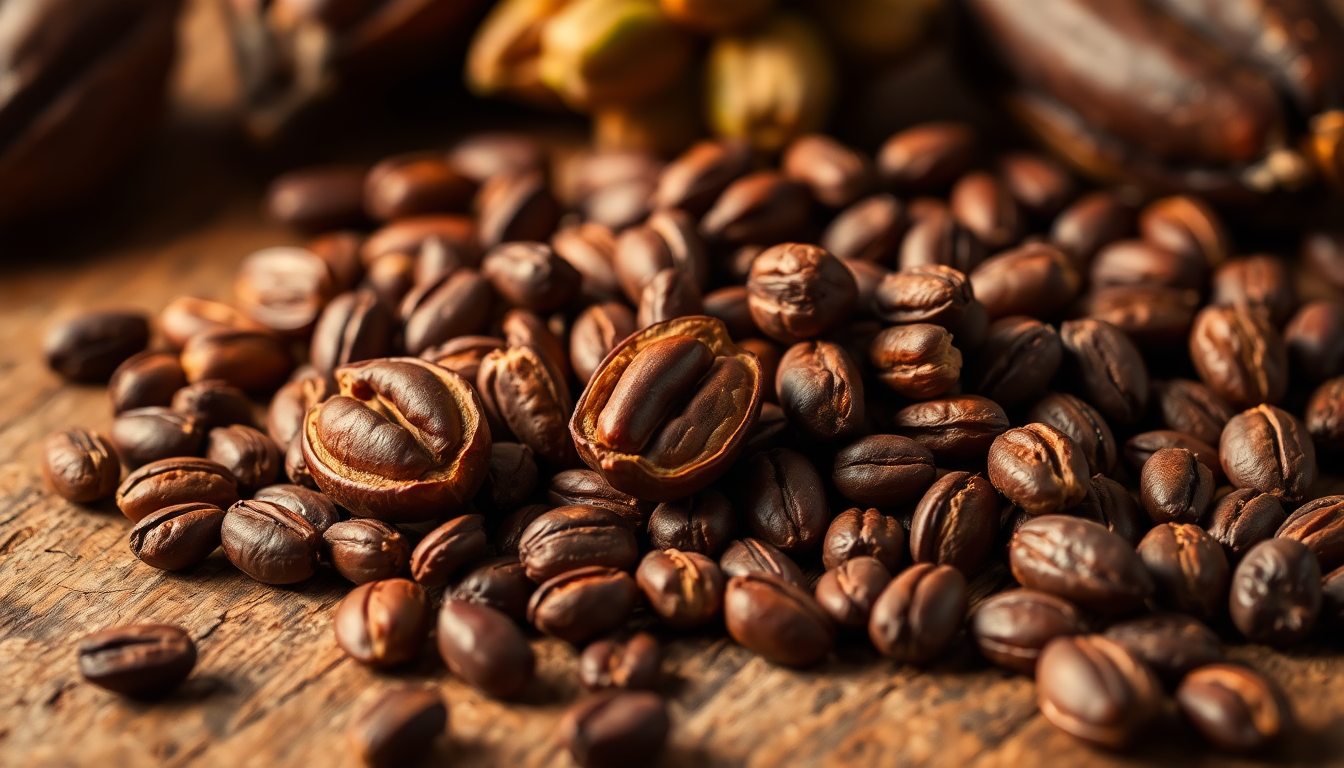
The Fascinating World of Chocolate
Chocolate is more than just a sweet treat; it's a complex, versatile ingredient with a rich history and incredible variety. From the intense bitterness of high-percentage dark chocolate to the creamy sweetness of white chocolate, the world of chocolate offers something for every palate. In this comprehensive guide, we'll explore the different types of chocolate, their unique characteristics, and how to best enjoy each variety.
Dark Chocolate: The Sophisticated Classic
Dark chocolate, also known as plain or bittersweet chocolate, stands as the purest expression of cocoa's natural flavor. What makes dark chocolate truly special is its higher concentration of cocoa solids and lower sugar content compared to other varieties.
Cocoa Percentage Varieties
Dark chocolate is typically categorized by its cocoa percentage, which indicates the combined amount of cocoa solids and cocoa butter:
- 70-85% Cocoa: This range offers a robust chocolate flavor with moderate bitterness and subtle sweetness. It's perfect for those transitioning from milk chocolate to darker varieties.
- 85-90% Cocoa: With minimal sugar, these chocolates highlight the complex flavor notes of the cocoa bean. Expect intense bitterness balanced by fruity, nutty, or floral undertones.
- 90-100% Cocoa: These ultra-dark chocolates are not for the faint-hearted. With little to no added sugar, they deliver the purest chocolate experience with pronounced bitterness and complex flavor profiles.
Health Benefits of Dark Chocolate
Dark chocolate isn't just delicious; it's also packed with potential health benefits when consumed in moderation:
- Rich in antioxidants, particularly flavonoids
- Contains minerals including iron, magnesium, and zinc
- May improve heart health by reducing blood pressure
- Potentially boosts brain function and mood
Culinary Uses for Dark Chocolate
The complex flavor profile of dark chocolate makes it incredibly versatile in the kitchen:
- Ideal for baking where its intense flavor won't be overwhelmed by sugar
- Perfect for ganaches and truffles where its bitterness can be balanced with cream
- Excellent for chocolate-covered fruits, especially oranges and strawberries
- A sophisticated addition to savory dishes like mole sauce or chili
Milk Chocolate: The Beloved Classic
Milk chocolate holds the title of the world's most popular chocolate variety, beloved for its creamy texture and approachable sweetness. The addition of milk solids (typically in the form of milk powder) gives this chocolate its characteristic smooth texture and lighter color.
Composition and Characteristics
Milk chocolate typically contains:
- 10-40% cocoa solids
- Milk powder or condensed milk
- Higher sugar content than dark chocolate
- Cocoa butter
The result is a sweet, creamy chocolate with a mellow flavor that appeals to a wide audience. Quality milk chocolate should still have discernible cocoa notes beneath its sweetness and dairy flavors.
Regional Variations
Milk chocolate varies significantly across different chocolate-producing regions:
- European Milk Chocolate: Typically contains higher fat content, giving it a smoother mouthfeel and richer flavor. Belgian and Swiss varieties are particularly renowned.
- American Milk Chocolate: Often contains less cocoa (around 10-15%) and more sugar, resulting in a sweeter, less complex flavor profile.
- British Milk Chocolate: Tends to have a higher milk content, creating a distinctive creamy flavor that many chocolate enthusiasts prize.
Best Uses for Milk Chocolate
The approachable flavor of milk chocolate makes it incredibly versatile:
- Perfect for everyday snacking and confections
- Ideal for kid-friendly baking projects
- Excellent for creamy chocolate mousse
- The traditional choice for s'mores and candies
- Works beautifully in cookies, cakes, and brownies where a milder chocolate flavor is desired
White Chocolate: The Creamy Delight
White chocolate stands apart from its darker counterparts, offering a unique creamy experience without the characteristic brown color or pronounced cocoa flavor of traditional chocolate.
What Makes White Chocolate Unique
Despite debates about whether it's "real" chocolate, white chocolate contains cocoa butter—the natural fat found in cocoa beans—but no cocoa solids. Its composition typically includes:
- Cocoa butter (at least 20% in quality products)
- Sugar
- Milk solids
- Vanilla or other flavorings
This combination creates a sweet, buttery confection with subtle vanilla notes and a smooth, melt-in-your-mouth texture.
Quality Indicators
Not all white chocolate is created equal. High-quality white chocolate should:
- List cocoa butter as its first ingredient
- Have a pale ivory color rather than stark white
- Offer a smooth, velvety mouthfeel
- Melt cleanly without a waxy finish
- Provide subtle dairy notes with vanilla undertones
Culinary Applications
White chocolate's unique properties make it particularly suitable for certain culinary applications:
- Takes on other flavors beautifully, making it ideal for infusions
- Creates stunning contrast when paired with colorful ingredients like berries or pistachios
- Perfect base for colorful confections and decorations
- Complements tart fruits like raspberries and passion fruit
- Makes exceptional mousses, ice creams, and cheesecakes
Ruby Chocolate: The Newcomer
The chocolate world was forever changed in 2017 with the introduction of ruby chocolate—the first new natural chocolate variety since white chocolate emerged in the 1930s.
The Discovery of Ruby Chocolate
Developed by Barry Callebaut, one of the world's largest cocoa processors, ruby chocolate is made from ruby cocoa beans. These special beans undergo a unique processing method that highlights their natural pink color and fruity flavor notes.
Flavor Profile and Characteristics
Ruby chocolate offers a completely distinctive taste experience:
- Natural pink color without added colors or flavors
- Tangy, berry-like flavor reminiscent of raspberries and strawberries
- Subtle sweetness with a balanced acidity
- Creamy texture similar to milk chocolate
- Approximately 47-48% cocoa content
Best Ways to Experience Ruby Chocolate
As a relatively new innovation, ruby chocolate is still finding its place in the culinary world:
- Best enjoyed in its pure form to appreciate its unique flavor
- Pairs beautifully with champagne and light sparkling wines
- Works well with citrus and tropical fruits
- Makes striking decorations for cakes and pastries
- Creates unique truffles and bonbons
Couverture Chocolate: The Professional's Choice
Couverture chocolate is the premium-quality chocolate preferred by professional chocolatiers and pastry chefs for its exceptional handling properties and superior flavor.
What Makes Couverture Special
The defining characteristic of couverture chocolate is its high cocoa butter content:
- Contains 32-39% cocoa butter (compared to 25-30% in regular chocolate)
- Available in dark, milk, and white varieties
- Requires tempering to achieve proper crystallization
- Flows more readily when melted, making it ideal for dipping and enrobing
Working with Couverture
Couverture's higher cocoa butter content gives it special properties:
- Creates a thinner, more even coating on dipped confections
- Produces a cleaner snap when properly tempered
- Results in a more lustrous finish
- Melts more smoothly and at a lower temperature
- Offers superior mouthfeel and flavor release
Where to Find and How to Use
While primarily marketed to professionals, couverture chocolate is increasingly available to home cooks:
- Sold in specialized baking shops and online
- Often comes in callets (small discs) for easier melting
- Ideal for making bonbons, truffles, and filled chocolates
- Perfect for chocolate decorations that require precision
- Makes exceptional chocolate-dipped fruits and confections
Compound Chocolate: The Practical Alternative
Compound chocolate, sometimes called confectionery coating, offers a more accessible and user-friendly alternative to pure chocolate for certain applications.
Composition and Characteristics
Unlike true chocolate, compound chocolate substitutes vegetable fats for cocoa butter:
- Contains cocoa powder but no cocoa butter
- Uses palm oil, coconut oil, or other vegetable fats
- Doesn't require tempering
- More stable at room temperature
- Typically less expensive than pure chocolate
When to Use Compound Chocolate
While purists may prefer real chocolate, compound chocolate has several practical advantages:
- Ideal for candy making in humid environments
- Perfect for chocolate fountains where stability is crucial
- Great for cake pops and other treats that need to set quickly
- Useful for colored chocolate decorations
- Practical for beginners learning chocolate work
Quality Considerations
Not all compound chocolates are created equal:
- Better varieties use high-quality cocoa powder
- Some premium versions incorporate some cocoa butter
- Flavor can vary significantly between brands
- Look for products with natural flavorings rather than artificial
Single-Origin Chocolate: The Connoisseur's Choice
Similar to fine wine or specialty coffee, single-origin chocolate showcases the unique flavor characteristics of cocoa beans from specific regions or even individual plantations.
Understanding Terroir in Chocolate
The concept of terroir—how environmental factors affect a crop's qualities—applies strongly to cacao:
- Soil composition affects mineral content and flavor
- Climate influences bean development and sugar content
- Altitude can impact acidity and flavor complexity
- Nearby plants may impart subtle flavor notes
Notable Chocolate Origins
Each cacao-growing region produces beans with distinctive flavor profiles:
- Madagascar: Bright acidity with pronounced red fruit notes
- Venezuela: Rich nutty flavors with hints of dried fruits
- Ecuador: Floral aromas with notes of tropical fruits
- Ghana: Classic chocolate flavor with mild bitterness
- Peru: Spicy notes complemented by caramel undertones
How to Appreciate Single-Origin Chocolate
To fully experience single-origin chocolate:
- Taste different origins side by side for comparison
- Allow chocolate to melt slowly on your tongue
- Note the flavor evolution from start to finish
- Consider both initial impact and lingering notes
- Try the same percentage from different origins to isolate terroir effects
Chocolate in Different Forms
Beyond its variety of types, chocolate appears in numerous forms for different applications.
Chocolate Bars and Tablets
The most recognizable form of chocolate:
- Range from small individual portions to large baking bars
- Available in virtually all chocolate varieties
- Often include additions like nuts, fruits, or spices
- Thickness affects mouthfeel and melting properties
- Artisanal makers often highlight bean origin and processing methods
Chocolate Chips and Chunks
Specifically designed for baking:
- Formulated to maintain their shape during baking
- Available in mini, standard, and chunk sizes
- Come in dark, milk, white, and sometimes ruby varieties
- Special versions available for different melting properties
- Some premium brands offer single-origin baking chips
Cocoa Powder
Made by pressing cocoa liquor to remove most of the cocoa butter:
- Natural Cocoa Powder: Untreated, more acidic, with a stronger chocolate flavor
- Dutch-Processed Cocoa: Alkalized to reduce acidity, with a deeper color and milder flavor
- Black Cocoa: Heavily Dutch-processed for an intense black color and mild flavor
Raw Cacao Products
Minimally processed chocolate products that preserve more natural compounds:
- Cacao Nibs: Crushed cacao beans with a crunchy texture and intense flavor
- Raw Cacao Powder: Cold-pressed and unroasted for maximum nutrient preservation
- Cacao Butter: The pure fat extracted from cacao beans
Conclusion: The Ever-Evolving World of Chocolate
The diverse world of chocolate offers an endless journey of discovery for both casual enthusiasts and serious connoisseurs. From the intense complexity of single-origin dark chocolate to the creamy sweetness of milk chocolate and the innovative properties of ruby chocolate, there's always something new to explore.
As chocolate making techniques continue to evolve and consumer interest in craft chocolate grows, we can expect even more innovation in this beloved food. Whether you're baking, crafting confections, or simply enjoying a square of fine chocolate with your coffee, understanding the different types of chocolate will enhance your appreciation of this remarkable food.
The next time you reach for chocolate, consider exploring a variety you haven't tried before—you might discover a new favorite in this rich and diverse world of sweet possibilities.

Claire Bennett
I'm Claire, a chocolate lover and artisan based in a small town where I run a tiny home kitchen dedicated to exploring everything chocolate. From single-origin dark bars to creamy ganache and handmade truffles, I find joy in working with all types of chocolate. I believe chocolate has a story, and I love bringing that story to life through humble, heartfelt creations.



Leave a comment
This site is protected by hCaptcha and the hCaptcha Privacy Policy and Terms of Service apply.